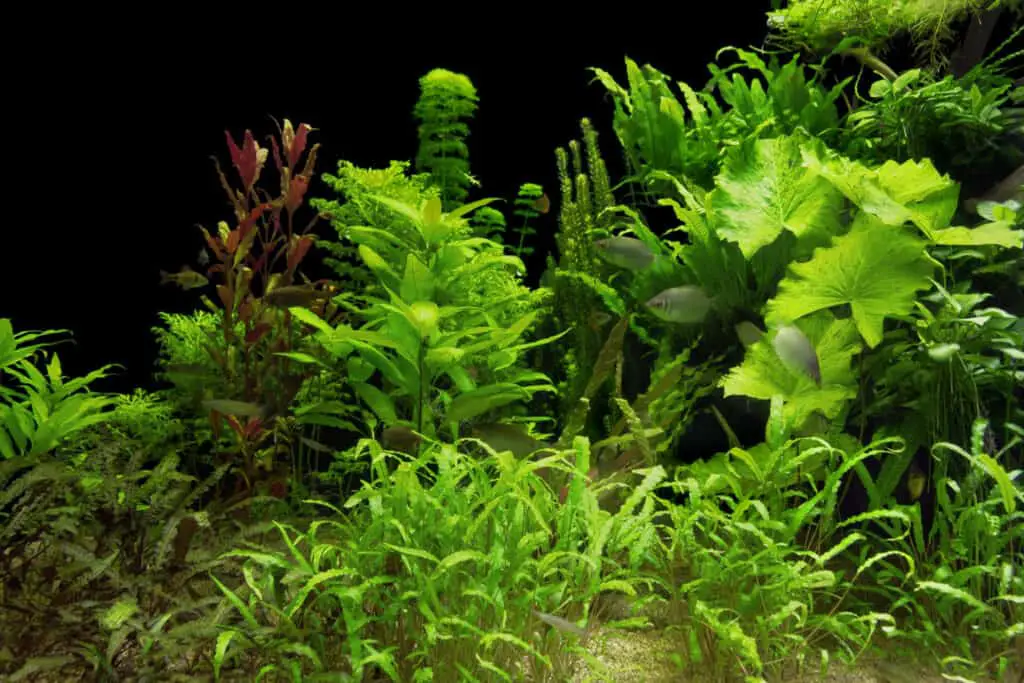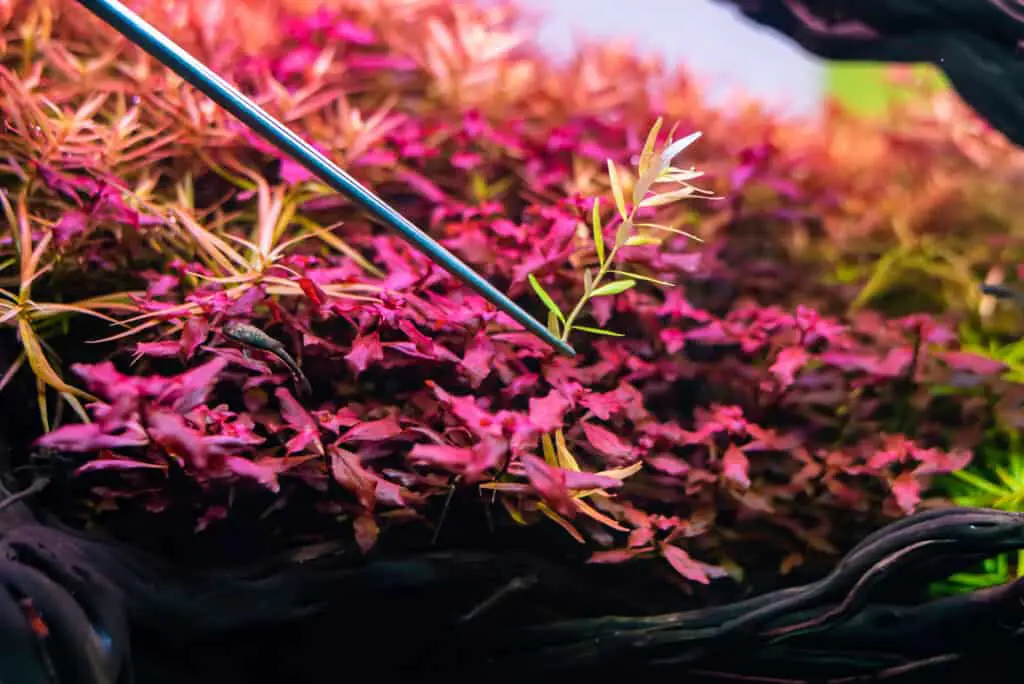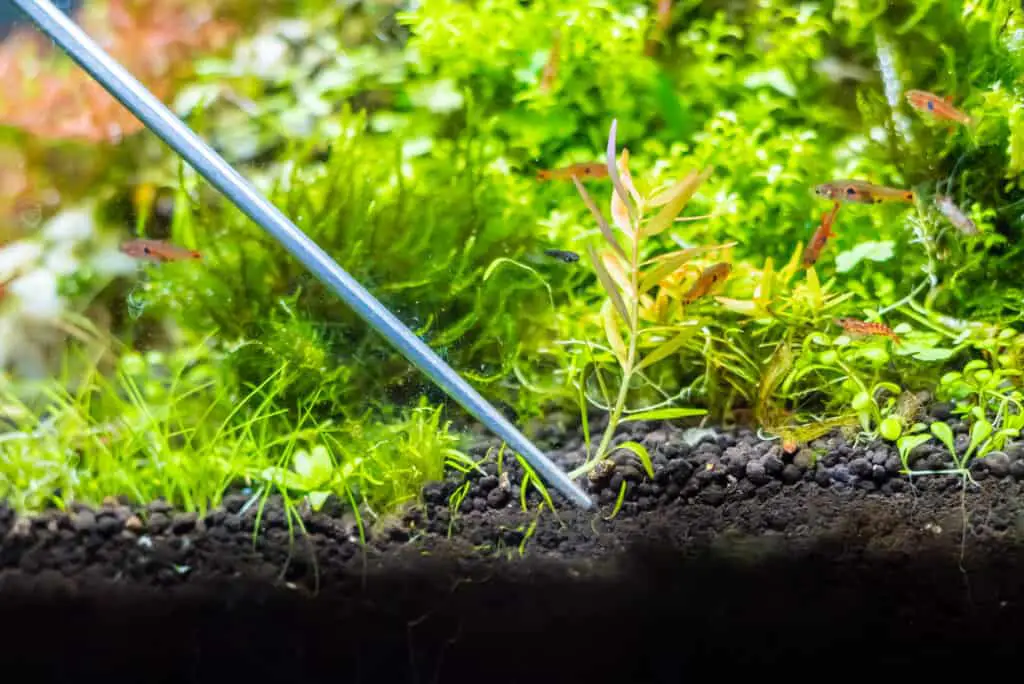
Considering new aquarium plants in a tank can be an exciting experience for budding aquarists and seasoned hobbyists alike.
But there might be some curiosity about how long it will take for these plants to become established in your aquarium.
Understanding the timeframe and the factors that play a role in a plant’s establishment in a tank can greatly assist in creating a thriving tank ecosystem.
However, the timeline for plant establishment will vary from individual plants and the different species.
In general faster growing plants such as Hornwort and Water Wisteria will take a few weeks to become fully established.
Slow-growing plants like Amazon Sword and Cryptocoryne may take upwards of a few months.
Though these rough generalities will give an estimate of how long your plants will take to establish fully, there are many variables to consider that can cause variance in these timelines.
Let’s explore these factors, as well as other ways to help your plants become established and what to look for to ensure a successful plant experience.

Factors That Affect Establishment Time
To be considered established in a tank, aquarium plants must begin to grow, both above and below the substrate.
Several factors can be controlled in your aquarium that will affect how long your plants will take to establish, as without these they may never be able to establish.
Lighting
The biggest factor that will affect a plant’s establishment time is lighting. Without lighting your aquarium plants will not be able to grow, and their root system will become stagnant.
For most plants, having access to light for around 10-12 hours per day would be ideal.
If your lights have a par rating below 50 at the substrate, this is considered low light.
Remember that the height of your aquarium will adjust the par rating at the substrate level.
If you have low light, you can make some compensation by increasing the amount of time your lights are on.
Substrate
The type of substrate being used in your aquarium can have a big impact on the rate at which your plants will become established.
A major component to plants becoming established in your tank, is their rooting system being able to grow and provide support to the plant above the ground.
If using active, or nutrient-rich substrates, they will also provide the benefit of nutrients to help the roots grow, but for many beginners, these options are typically the least cost-effective way to have a planted tank, so we will focus on inert options, or the substrates that do not affect your water chemistry, and then fertilizers are used to provide the nutrients.
Read my article here if you would like to learn how often you should fertilize your plants.
The two most popular inert substrates are gravel and sand.
When using gravel there should be thought into what size is being used.
Smaller gravel is often better than larger gravel, as it provides more support for the root system to hold on to while allowing room for the roots to expand.
If sand is being used, it is the opposite of gravel.
The coarser, larger sand is better compared to finer sand, as the finer sand has a greater likelihood of becoming compact, making root expansion more difficult, and causing a reduction in oxygen exchange with the possibility of becoming anaerobic.
Water Parameters (pH, Hardness, and Temperature)
Like fish, plants also have preferred water parameters which in turn provide the environment for them to grow optimally.
These are the preferred ranges for most plants for the most common water parameters:
| Parameter | Value |
| pH | 6.5 – 7.8 |
| gH (General Hardness) | 50 ppm – 100 ppm |
| dKH | 54 ppm – 140 ppm |
| Nitrates | < 10 ppm |
| Phosphates | < 0.5 ppm |
| Temperature | 74° – 80° F (23.3° – 26.67° C) |
These parameters are not necessarily required, and if your parameters are out of these ranges, it doesn’t mean that your plants will not grow, and thrive, but they may take longer to become fully established in your tank.
If your Nitrate or Phosphate levels are high, consider doing a partial water change, as these levels if too high can also cause issues to your tank inhabitants.
Making these changes, or at least being able to observe, or take in these three factors in aquarium plant establishment, gives the best odds for you to be able to bring in new plants that thrive.
Signs of Aquarium Plant Establishment
The plants themselves will show you when they have become established in a tank.
The biggest of these is visible signs of consistent growth.
Once plants become established in your tank, they will begin to grow taller, and add new leaves.
If the plant produces runners, that is another good sign that your plants are becoming established in the tank.
You will not visibly see the roots of the plants growing, but the growth of the plants above the surface indicates that the roots are also growing beneath the substrate.

Tips for Accelerating Aquarium Plant Establishment
The best way to help the plant establishment process is to start with a good foundation by planting correctly.
Make sure that if it is a rooted plant, first take care not to break or damage the roots when taking the plant out of its container.
When planting be sure to cover the roots with the substrate to help them begin to establish in the ground.
If your plant is a bulb plant, do not cover the bulb completely.
Doing so will cause the plant to rot and will then never become established.
If no visible growth is seen after a week, try turning the bulb over.
If you are planting in a brand new tank, or one without plants, consider spacing the different types of plants out to help reduce competition for resources.
Final Thoughts
Adding new plants is an exciting, and rewarding experience for new and established aquarium hobbyists.
Knowing how to help your plants to become established in your tank, and knowing how long the establishment period should take will help in realizing when changes should be made.
Make sure to allow your plants to tell you if these changes need to be made, otherwise, let them go and grow to begin this exciting journey in the world of plant aquariums.
